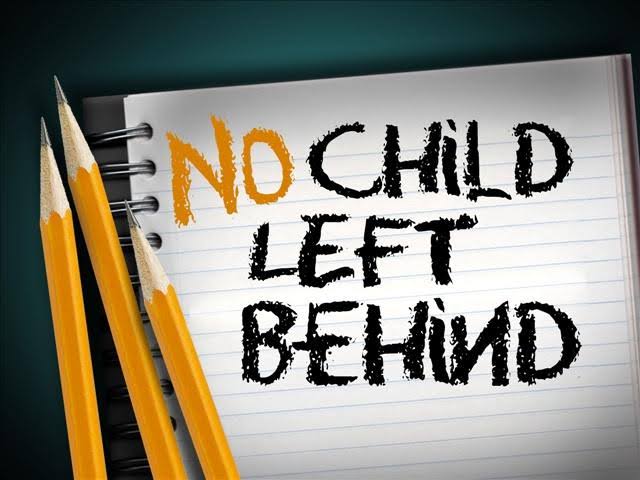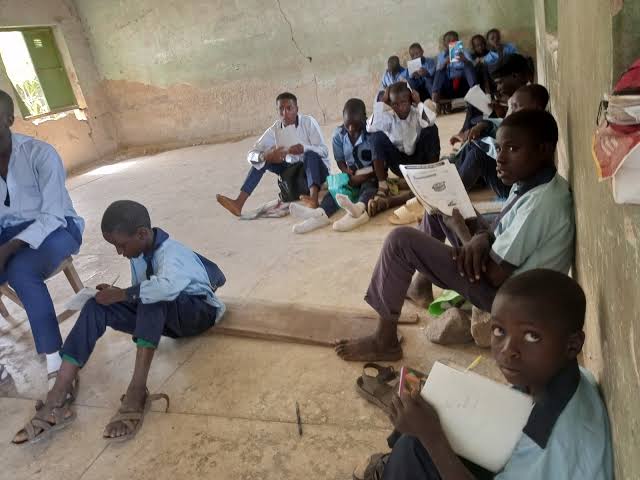“Leave No Child Behind” is a powerful call to action that underscores the imperative of providing every child, irrespective of their background, with access to quality education. This principle aligns with the United Nations’ Sustainable Development Goal 4, which aims to ensure inclusive and equitable quality education and promote lifelong learning opportunities for all by 2030.
According to UNESCO global report on boys disengagement from education, , girls have more difficulty accessing education and are more likely than boys to be out of school at primary level. However, boys are at greater risk of repeating grades, failing to progress and complete their education, and not learning while in school. Globally, 128 million boys are out of school. That’s more than half of the global out-of-school youth population and more than the 122 million girls who are also out of school.
Ensuring access to quality education for all is not a zero-sum game. It is important to ensure that a focus on achieving gender parity and equality does not ignore boys. Supporting boys does not mean that girls lose out and vice-versa. On the contrary, equal education opportunities benefit both girls and boys and the broader society.
In Lagos, the LASUBEB project Zero symbolizes Zero Tolerance, re echoes this initiative. It highlights the Lagos State 2007 Child’s Right Law, which ensures the right to free and compulsory primary education (Section 14). It was launched by the Lagos State Government in 2020, with the aim to gather and speed up support to address the issue of out-of-school children in the state. The objective of Project Zero is to enroll , or re-enrol, school-aged children who have been unable to attend school due to the pandemic or other societal challenges, into government primary schools. The leave no child behind initiative is one that so many states in Nigeria are embracing.
On Inclusive education, it embodies the promise of equality. It is a vision where every child, whether rich or poor, urban or rural, able-bodied or disabled, has the opportunity to learn and thrive. It is a plea for opportunity, equality, and a brighter future. “Leave No Child Behind” is more than a slogan; it is a powerful commitment to ensure that every child, regardless of their circumstances, has access to quality education.
The significance of inclusive education cannot be overstated. It is the bedrock of a just and equitable society. When children are provided with equal educational opportunities, they are empowered to break the cycles of poverty and discrimination that have hindered their communities for generations. Education opens doors to better employment prospects, improved health outcomes, and greater civic participation. It is a catalyst for social change and economic development.
The Head of department, Social Mobilization,Local Government Educational Board, Lagos Mainland, Mrs Oke Abimbola Omolola has lauded the Lagos state government initiative project zero which is part of a larger effort by the Lagos State government to ensure every child has access to quality education. In an exclusive interview with Edugist, Mrs. Oke shed light on the remarkable progress made by Project Zero in tackling the issue of out-of-school children and Other initiatives, operating under the umbrella of the Lagos State government.
“We have been tirelessly working to raise awareness and encourage parents to prioritize their children’s education”.
“Our mission is clear: to ensure that no child is left behind in Lagos State,” Mrs. Omolola emphasized. “Through Project Zero, we are taking decisive steps to bring every child into the fold of education.”
However, the reality remains stark: millions of children around the world are still left behind, excluded from the educational opportunities they deserve. Poverty remains one of the most significant barriers to education. Children from low-income families often face financial constraints that prevent them from attending school. The cost of school fees, uniforms, books, and transportation can be insurmountable for families struggling to meet their basic needs. Additionally, children in poverty are more likely to engage in child labour to support their families, further hindering their educational opportunities.
Aside from poverty which can hinder children’s education in general, gender discrimination and cultural norms often prioritise boys’ education over girls’. In many societies, girls are expected to take on domestic responsibilities or marry early, limiting their access to education.
Another category of people who are often left behind in education is those living with disabilities. Children with disabilities face multiple barriers, including physical accessibility issues, lack of specialised resources, and social stigma. Many schools often lack the infrastructure and trained staff to support their needs, making education inaccessible for many. Although there are school for children with special needs, however, there are mo enough teachers as well as infrastructures.
Orphans and children from vulnerable backgrounds often lack the familial support and resources necessary for education. These children may live in institutions, foster care, or on the streets, facing significant challenges in accessing and remaining in school. They are often left behind and most times, the society doesn’t care whether they have access to education as there are no adequate measures in place. Also, geographical isolation is a significant barrier to education for children in rural and remote areas. These regions often lack schools, qualified teachers, and basic infrastructure, making it difficult for children to access quality education.
Refugee and displaced children face unique challenges in accessing education, including legal barriers, language differences, and trauma from displacement. According to UNHCR, only 63% of refugee children attend primary school, and this number drops significantly at the secondary level.
“Leave No Child Behind” is a call to action that requires commitment, innovation, and collaboration from all governments , NGOs, and the society at large. There should be more inclusive policies that provide everyone regardless of their category and background with access to education without restriction. As we strive towards this goal, let us remember that the future of our societies depends on the opportunities we provide to the children of today. By leaving no child behind, we pave the way for a brighter, more equitable future for all.











